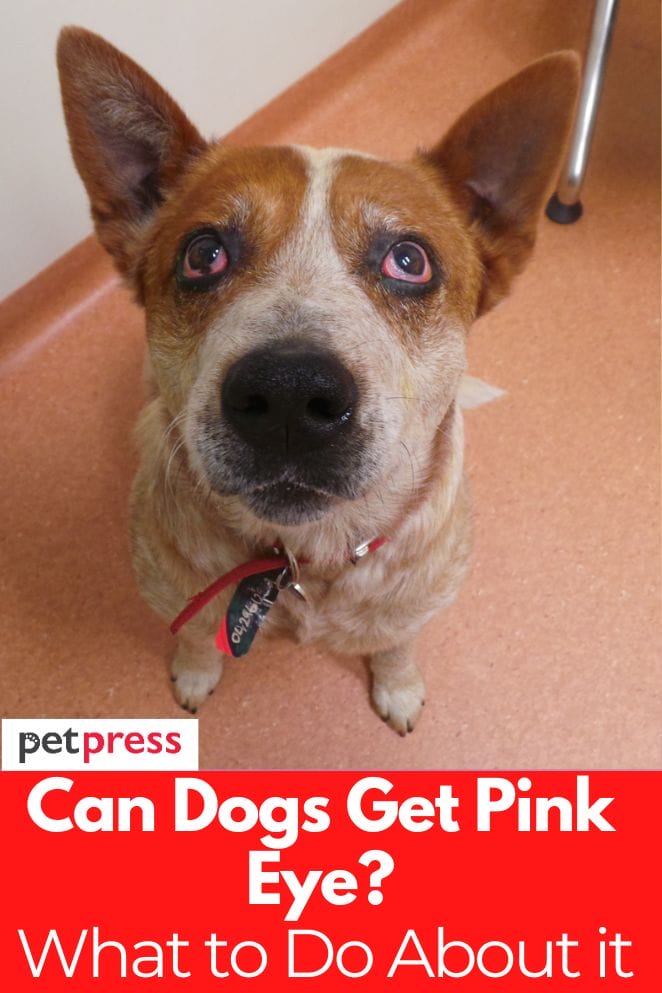
It’s a common question that pet owners ask – can dogs get pink eye?
The answer is yes, they can.
Pink eye, also known as conjunctivitis in the veterinary sector, is a very prevalent condition in dogs. Conjunctivitis in dogs, like pink eye in people, typically results in red irritated eyes.
As a result of this, the disease has acquired its name “pink eye.”
The conjunctiva is the tissue that lines your dog’s eye, eyelids, and third eyelid, and when this gets red and irritated, it could mean that your dog needs to see the veterinarian for conjunctivitis.
In this blog post, we will discuss what causes pink eye in dogs, how to tell if your dog has it, and what you should do if he does. Keep reading for more information!
How do I know if my dog has pink eye?
Signs and symptoms of conjunctivitis in dogs include:
Red, irritated eyes
The conjunctiva, which is the thin layer of tissue that coats the surface of the eyeball and lines the inside of the eyelids, becomes inflamed and irritated.
This can cause the blood vessels in the conjunctiva to become more visible, giving the eyes a pink or reddish appearance.
Excessive tearing
Excessive tearing is one of the most common symptoms of pink eye in dogs. If you notice a sudden increase in tearing, it could be a sign of irritation or infection.
Squinting
One way to know if your dog has pink eye is if they are squinting. This is because the infection will cause their eyes to produce more tears than normal, which can sting and irritate the eyes.
Pawing at the eyes
Pawing at the eyes is one of the most common symptoms of pink eye in dogs. If your dog is pawing at his eyes more than usual, it’s important to take him to the vet for a checkup.
If you notice any of these signs in your dog, it’s important to make an appointment with your veterinarian right away.
They will be able to properly diagnose your dog and provide the appropriate treatment.

What causes pink eye in dogs?
There are a few different things that can cause conjunctivitis in dogs, including:
Allergies
One of the most common causes of pink eye in dogs is allergies. Just like people, dogs can have allergic reactions to pollen, dust, mold, and other airborne irritants.
When these allergens come into contact with the conjunctiva, they can cause the tissue to become inflamed and irritated.
Bacterial infection
Bacterial infections are another common cause of pink eye in dogs. Bacteria can enter the eye in a number of different ways, including contaminated food, water, or objects.
Once the bacteria enter the eye, they can multiply and cause an infection.
Viral infection
Viral infections are another common cause of conjunctivitis in dogs. Canine adenovirus is a virus that commonly infects dogs and can cause conjunctivitis.
This virus is typically spread through contact with contaminated objects, such as toys, bowls, and leashes.
There are a number of different things that can cause pink eye in dogs.
How do you treat pink eye in dogs?

The treatment for pink eye in dogs will depend on the underlying cause.
Allergies
If your dog’s pink eye is caused by allergies, the best course of treatment is to avoid the allergens that are causing the reaction.
This may mean keeping your dog indoors during pollen season or using air filters in your home.
Your veterinarian may also recommend antihistamines or other medications to help relieve your dog’s symptoms.
Bacterial infection
If your dog’s pink eye is caused by a bacterial infection, the best course of treatment is antibiotics. Antibiotics will help to kill the bacteria that are causing the infection.
Your veterinarian may also recommend anti-inflammatory medications to help relieve your dog’s symptoms.
Viral infection
If your dog’s pink eye is caused by a viral infection, there is no specific treatment. The virus will have to run its course and your dog’s immune system will eventually fight off the infection.
In the meantime, your veterinarian may recommend anti-inflammatory medications to help relieve your dog’s symptoms.
Conclusion
Pink eye is a common condition in dogs that can have a number of different causes. The best way to treat pink eye is to identify the underlying cause and treat it accordingly.
If you think your dog may have pink eye, make an appointment with your veterinarian right away.
Your veterinarian will be able to perform a thorough examination and determine the best course of treatment.
In the meantime, you can help to prevent the spread of infection by avoiding contact with your dog’s eyes and maintaining good hygiene.
With prompt treatment, pink eye is usually a minor condition that clears up quickly. However, if left untreated, pink eye can lead to serious health problems.
You can also find out the reasons why dogs get eye boogers!



GIPHY App Key not set. Please check settings